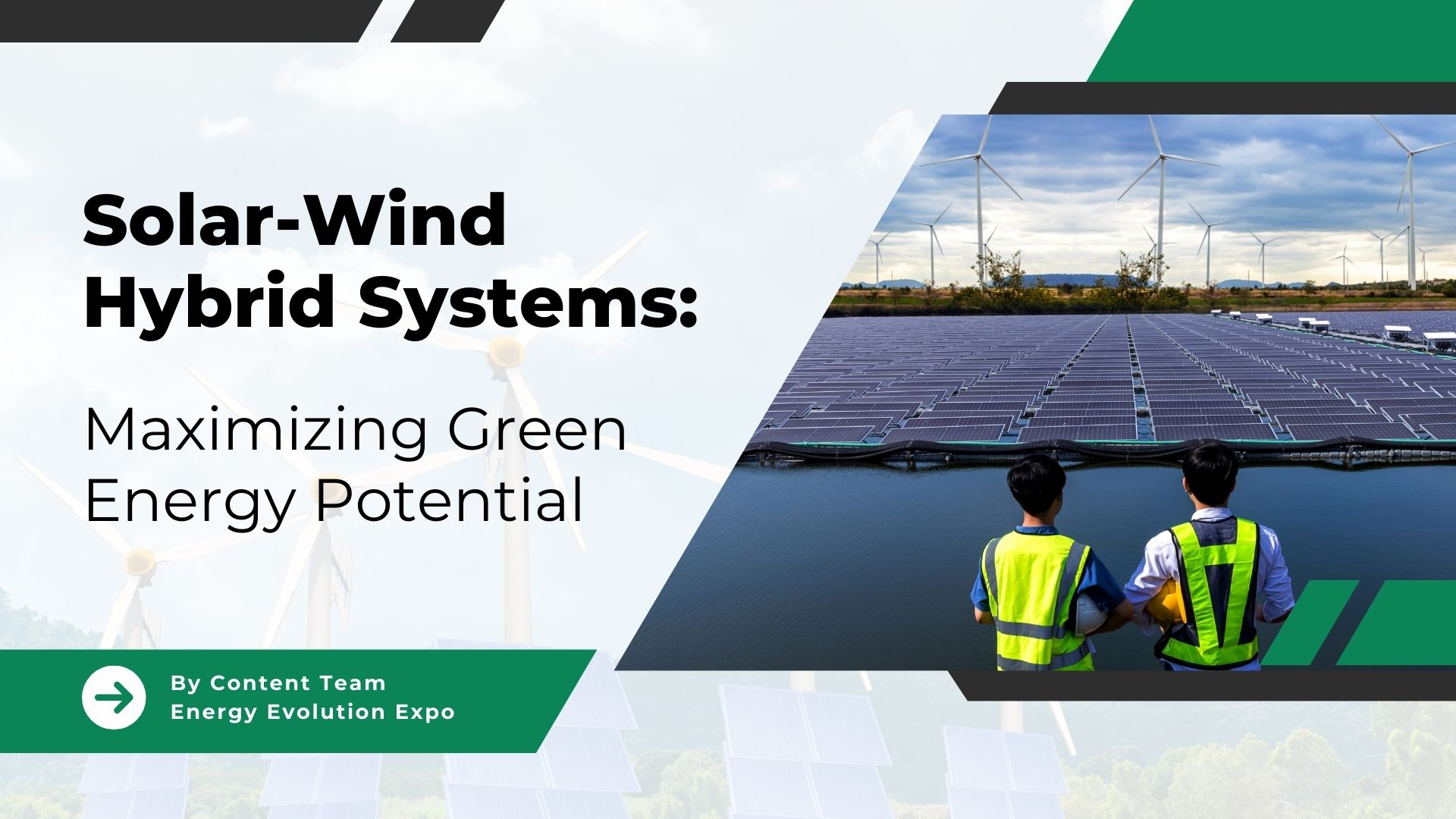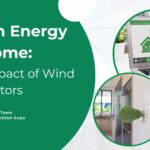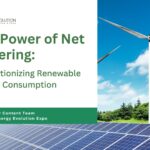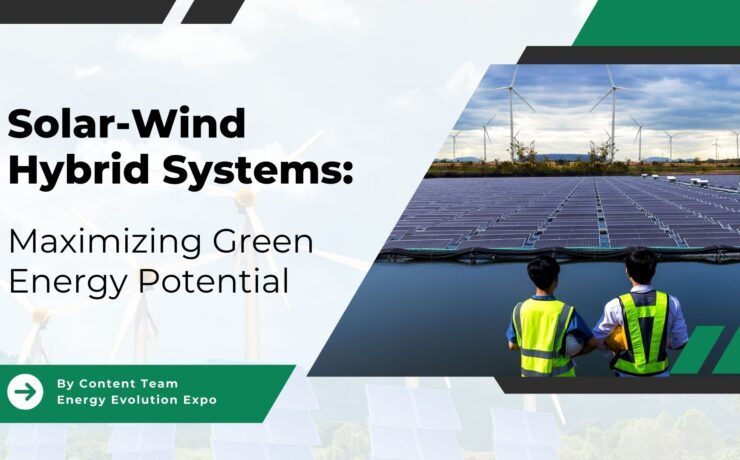Solar-Wind Hybrid Systems: Maximizing Green Energy Potential

Utilizing a Solar Wing Hybrid System involves the integration of both solar power generation and wind power generation. By combining these renewable energy sources, the system aims to optimize efficiency and increase energy output. This system encompasses various components, along with associated benefits and challenges, which will be further explored.
Components of a Solar Wing Hybrid System
- Solar Panels: Solar panels, specifically Photovoltaic (PV) panels, are designed to convert sunlight directly into electricity through the photovoltaic effect. These panels are typically mounted on structures that position them at optimal angles to maximize sunlight exposure throughout the day and across different seasons. The electricity generated by PV panels is in the form of direct current (DC), which needs to be converted into alternating current (AC) by inverters to be compatible with the electrical grid or to power standard household appliances. This system allows for the efficient capture and use of solar energy, contributing to sustainable and renewable energy solutions.
- Wind turbines: Wind turbines harness the kinetic energy from wind to generate electricity, with two main types being Horizontal-Axis Wind Turbines (HAWTs) and Vertical-Axis Wind Turbines (VAWTs). HAWTs, the more prevalent type, feature blades that rotate around a horizontal axis, typically positioned to face the prevailing wind direction for optimal efficiency. VAWTs, less common, have blades that rotate around a vertical axis and can capture wind from any direction, making them versatile but generally less efficient. Both types require sturdy tower and foundation structures to support the turbine and ensure stability. The kinetic energy captured by the rotating blades is converted into electrical energy by generators housed within the turbine structure. This electricity can be used to power homes, businesses, or fed into the electrical grid, contributing to renewable energy production and reducing reliance on fossil fuels.
- Energy storage Systems: Energy storage systems are integral components of solar hybrid systems, enabling efficient utilization of renewable energy. Batteries play a pivotal role by storing surplus electricity generated by solar panels and wind turbines during periods of high production, such as sunny or windy days. These stored reserves are then utilized during times of low energy production, such as at night or during calm weather,ensuring a stable and continuous power supply. Flywheels, another storage option, store kinetic energy mechanically and can quickly release it when needed, providing short-term energy backup or smoothing out fluctuations in energy supply. Supercapacitors, on the other hand, store energy in an electric field and are capable of rapid charge and discharge cycles, making them ideal for applications requiring quick bursts of energy, such as during peak demand periods. Together, these storage technologies enhance the reliability and resilience of solar hybrid systems by mitigating intermittency issues associated with renewable energy sources and supporting their integration into the electrical grid.
- Control Systems: Control systems such as Energy Management Systems (EMS) and Smart Grid technologies play crucial roles in optimizing the performance and integration of solar hybrid systems. EMS oversees and coordinates the operation of solar panels and wind turbines within the hybrid system, ensuring they operate at maximum efficiency and productivity. It manages energy production based on real-time data, adjusting settings to match energy demand and storage capabilities. Smart Grids, on the other hand, are sophisticated electrical infrastructures that enhance the distribution and management of energy flow. They enable bidirectional communication between energy producers (such as solar and wind generators) and consumers (homes, businesses), allowing for dynamic adjustments in energy distribution, load balancing, and responsiveness to changes in renewable energy availability. Together, these control systems enable solar hybrid systems to operate seamlessly, optimize energy utilization, and contribute to a more stable, sustainable, and resilient energy infrastructure.
Benefits of a Solar Wing Hybrid System:
1. Increased Energy Reliability: By combining solar and wind power, hybrid systems can generate electricity more consistently, as they can produce power when either the sun is shining or the wind is blowing.
2. Enhanced Efficiency: The complementary nature of solar and wind resources can lead to more efficient use of renewable energy, maximizing the output and reducing downtime.
3. Cost Savings: Over time, hybrid systems can reduce energy costs by lowering dependency on fossil fuels and minimizing the need for expensive energy storage solutions.
4. Environmental Benefits: Hybrid systems help decrease carbon emissions and environmental impact by utilizing clean, renewable sources of energy.
5. Optimal Land Use: Combining solar and wind installations can make better use of available land, reducing the footprint needed for renewable energy projects.
6. Grid Stability: Hybrid systems can provide more stable power supply, which is beneficial for grid stability and can reduce the need for backup power from non-renewable sources.
7. Energy Independence: They can help communities and businesses become more energy independent, reducing vulnerability to energy price fluctuations and supply disruptions.
8. Scalability: Solar-wind hybrid systems can be scaled to meet various energy needs, from small residential setups to large industrial installations.
Challenges of a Solar Wind Hybrid System:
The challenges encountered in the implementation of a Solar Wing Hybrid System include high initial costs associated with the installation of solar panels, wind turbines, storage systems, and control technology. Another aspect is the technical complexity involved in integrating two distinct energy generation systems, requiring advanced technology and expertise for efficient operation and maintenance.
Additionally, considerations such as land availability and aesthetics come into play when trying to locate suitable sites that offer both optimal sunlight and wind conditions. Furthermore, grid integration poses a challenge in effectively integrating the power generated into the existing grid, necessitating sophisticated technology and infrastructure upgrades. Lastly, ongoing maintenance of solar panels and wind turbines is essential for ensuring peak performance, which can be particularly demanding in remote areas.
Case studies and examples highlight the use of hybrid power plants in renewable energy projects. For instance, the Heron Wind and Solar Energy project in the United States integrates solar panels with wind turbines to ensure a steady energy output. Hybrid systems are especially beneficial in remote areas with limited grid connectivity, providing a reliable energy source and decreasing reliance on diesel generators. Furthermore, groundbreaking projects combine floating solar panels and offshore wind turbines to take advantage of open sea spaces and consistent wind patterns.
Solar-wind hybrid systems combine solar panels and wind turbines to provide a more reliable and consistent power supply by leveraging two complementary renewable energy sources, often with battery storage for excess energy. They offer enhanced energy production and reduced dependence on a single source but come with higher initial costs and more complex maintenance.
Off-grid systems, on the other hand, operate independently from the main electricity grid, typically relying on either solar or wind energy with battery storage and sometimes a backup generator. They provide complete grid independence and scalability but depend heavily on energy storage and have limited power supply during low renewable energy periods. The choice between the two depends on specific needs, location, and resource availability.
We need to keep up with all recent innovations to reap maximum benefits and to facilitate a better understanding of the latest developments and trends in the Renewable energy Industry, various Conferences and Expos, which bring Industry leaders together, serve as an all-inclusive platform. The Energy Evolution Awards, Conference, and Expo organized by Next Business Media is making its debut in Spain in 2025. It will be a leading forum dedicated to honoring excellence in Energy Technology, showcasing innovations, and fostering collaborations.
The events unite industry leaders, and visionaries to explore the latest advancements, tackle key challenges, and shape the future of Energy. The Energy Evolution Awards, Conference, and Expo will celebrate outstanding achievements, promote sustainable practices, and drive the Energy Industry forward into a technologically advanced sustainable era. Energy Evolution Awards, Conference, and Expo will be a platform for cultivating innovation and shaping a brighter, more efficient energy landscape.






